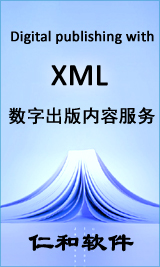LI Guodong
,
D U Ting
,
Central Iron and Steel Research Institute
,
Ministry of Metallurgical Industry
,
Beijing
,
China LI Guodong
,
Department No.16
,
Central Iron and Steel Research Institute
,
Ministry of Metallurgical Industry
,
Beijing
,
100081
,
China
金属学报(英文版)
The thermodynamic properties of Cu-Ce-S and Cu-Y-S liquid solutions were studied by the chemical equilibrium technique at 1200℃. The equilibrium constants and the standard free energies of formation of CeS and YS were determined for the reactions: CeS=[Ce]+[S] and YS = [Y]+[S] . For the solution of Ce_(1) and Y_(l) in pure Cu according to the reactions: Ce_(1)= [Ce] and Y_(1)= [Y] , the standard free energies of solutions were obtained. The first order and second order interaction coefficients between solute elements as well as the activity coefficients γ_(Ce)~0 and γ_Y~0 in liquid Cu were also determined.
关键词:
Cu-Ce-S system
,
null
,
null
Senying LIU
,
Rongze HU
,
Dongliang ZHAO and Chongyu WANG(Central Iron and Steel Research Institute
,
Beijing
,
100081
,
China)(To whom correspondence should be addressed)Ping LUO(National Research Cent or Certified Materials
,
Beijing
,
100013
,
China)Zhongjie P
材料科学技术(英文)
By use of self-consistent field Xα scattered-wave (SCF-Xα-SW) method, the electronic structure was calculated for four models of Ti4Al14X (X=Al, Fe, Ni and Cu) clusters. The Ti4Al14X cluster was developed based on L12 Al3Ti-base intermetallic compound. The results are presented using the density of states (DOS) and one-electron properties, such as relative binding tendency between the atom and the model cluster, and hybrid bonding tendency between the alloying element and the host atoms. By comparing the four models of Ti4Al14X cluster, the effect of the Fe, Ni or Cu atom on the physical properties of Al3Ti-based L12 intermetallic compounds is analyzed. The results indicate that the addition of the Fe, Ni or Cu atom intensifies the relative binding tendency between Ti atom and Ti4Al14X cluster. It was found that the Fermi level (EF) lies in a maximum in the DOS for Ti4Al14Al cluster; on the contrary, the EF comes near a minimum tn the DOS for Ti4Al14X (X=Fe, Ni and Cu) cluster. Thus the L12 crystal structure for binary Al3Ti alloy is unstable, and the addition of the Fe, Ni or Cu atom to Al3Ti is benefical to stabilize L12 crystal structure. The calculation also shows that the Fe, Ni or Cu atom strengthens the hybrid bonding tendency between the central atom and the host atoms for Ti4Al14X cluster and thereby may lead to the constriction of the lattice of Al3Ti-base intermetallic compounds.
关键词:
Guangwei HAN
,
Di FENG
,
and Wujun YE (Dept.5
,
Central Iron and Steel Research Institute
,
Beijing
,
100081
,
China)(To whom correspondence should be addressed)
材料科学技术(英文)
Investigation has been made into the causes of cracking in the Surfacing welding layer of Ni3Al based alloy by analysing both the liqu id-to-solid transformation in the molten pool and the distribution of thermal stress within the surfacing welding layer. The results show that cracking in the surfacing welding layer is directly related to the producing of eutectic phase β' (NiAl) in the interdendritic region and high thermal stress within the surfacing welding layer. When the process of electric arc surfacing welding is changed from along straight line to along" Z" pattern, cracking in the surfacing welding layer of Ni3Al based alloy is prevented due to being reduced of both the cooling rate of liquid in the molten pool and the moving speed of the heat source. Reducing the melting volume of the substrate material by lowering the output power of electric arc welding would make the content of iron atoms in the molten pool decrease. and this also can reduce the trend of the eutectic reaction in the interdendfitic region and is helpful to Suppress cracking in the surfacing welding layer.
关键词:
Guangwei HAN
,
Di FENG and Wujun YE (Central Iron and Steel Research Institute
,
Beijing
,
100081
,
China)
材料科学技术(英文)
Investigations have been made on the effects of temperature and fine disperse phase of disordered γ on strain hardening rate of Ni3Al based alloy. The result is found that there exists a peak temperature for the strain hardening rate of Ni3Al based alloy below the peak temperature of its yield strength. Analysis shows that the appearance of the peak temperature of strain hardening rate is caused by both the decreasing of the movability of <101> superdislocations on {111}slip plane and the increasing of the dynamic recovery in Ni3Al with increasing temperature. A Ni3Al based alloy hardened by disperse phase of disordered γ has been obtained by controlling chemical composition and treating processes. The peak temperature of strain hardening rate of this alloy is increased due to the fine disperse phase of disordered γ, which causes the reductions of the movability of the superdislocations and the dynamic recovery in Ni3Al
关键词:






